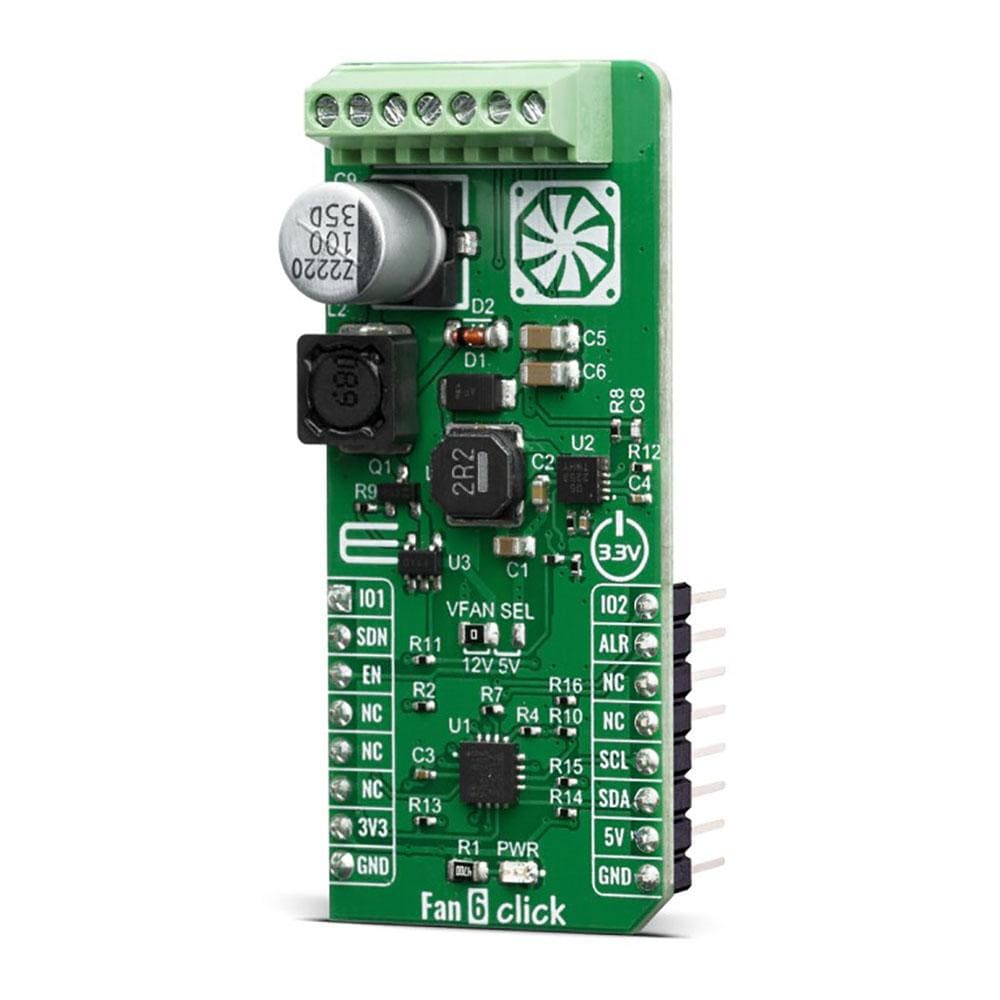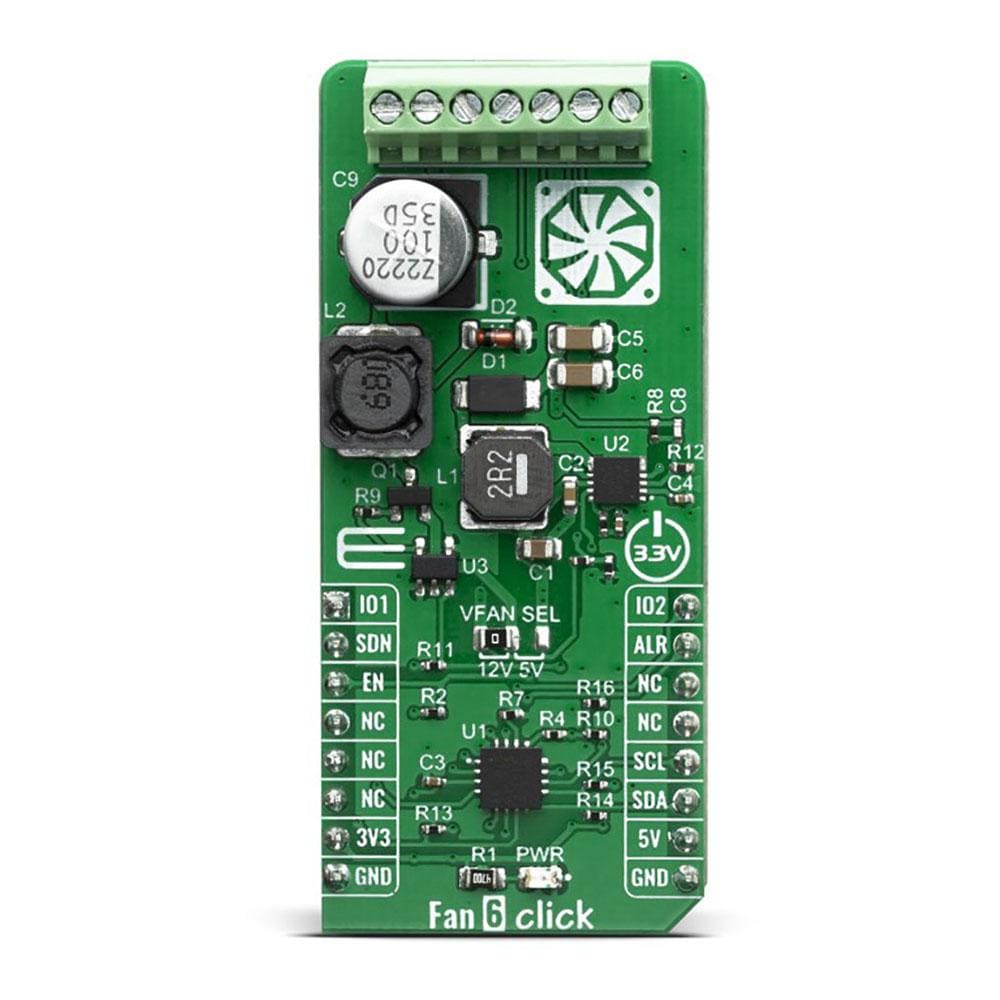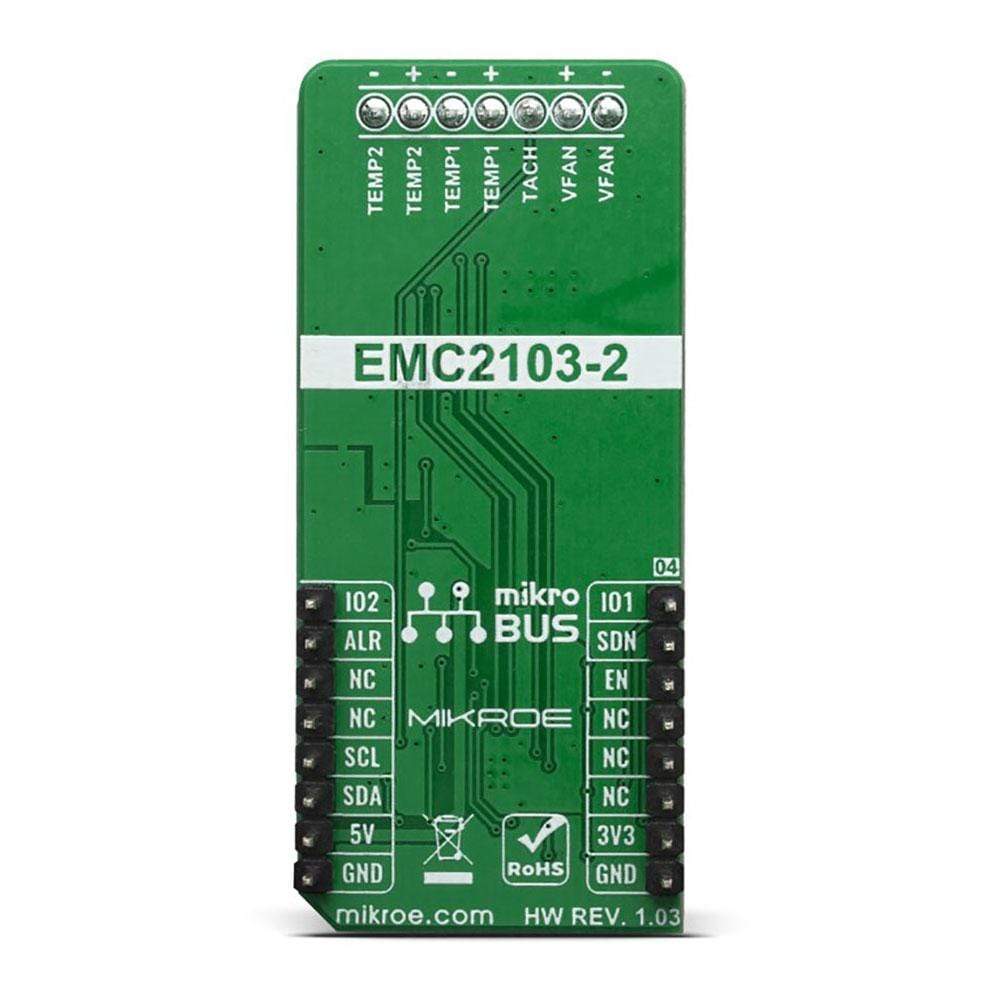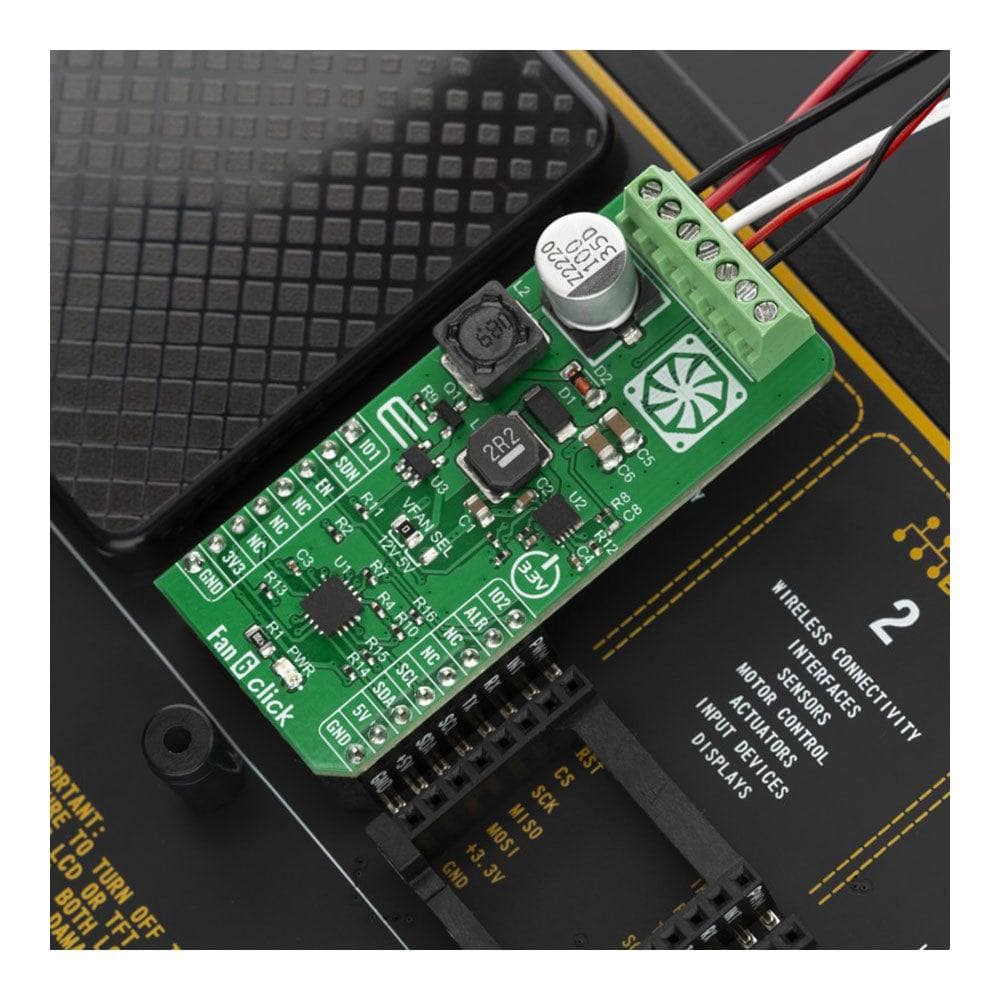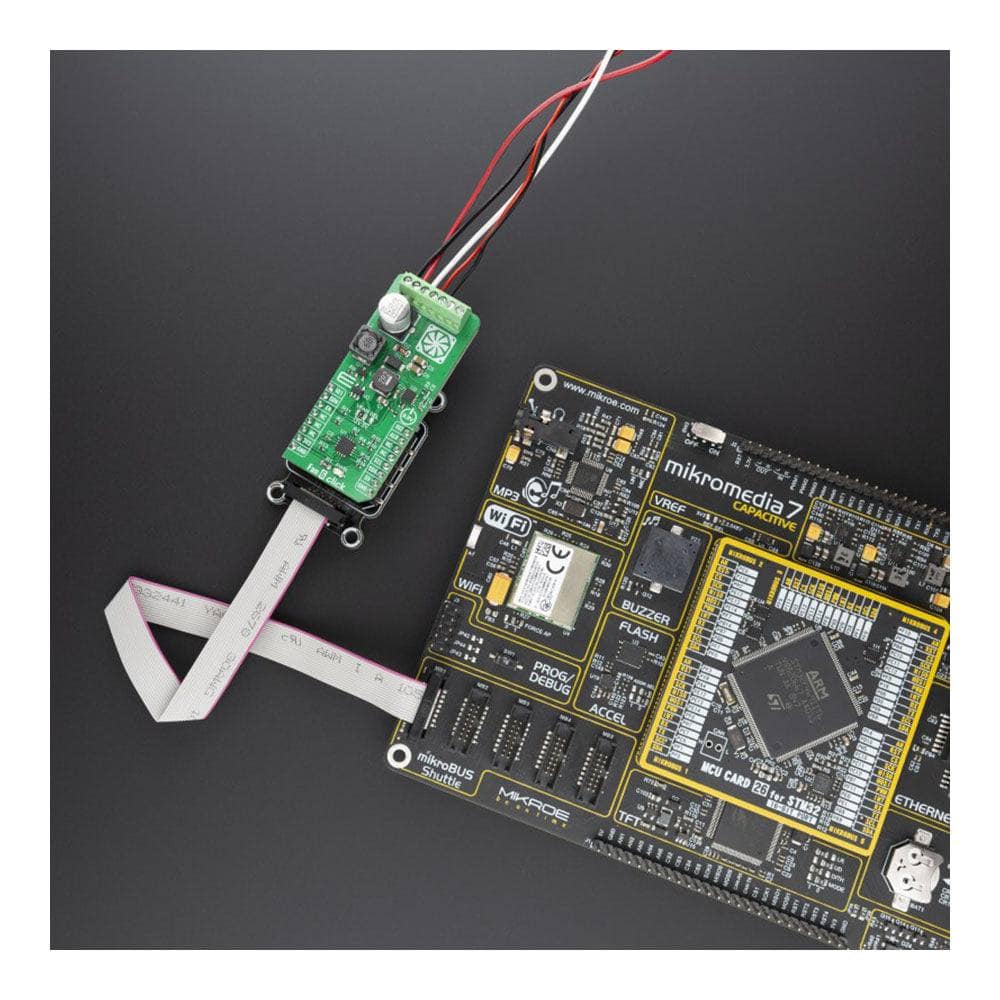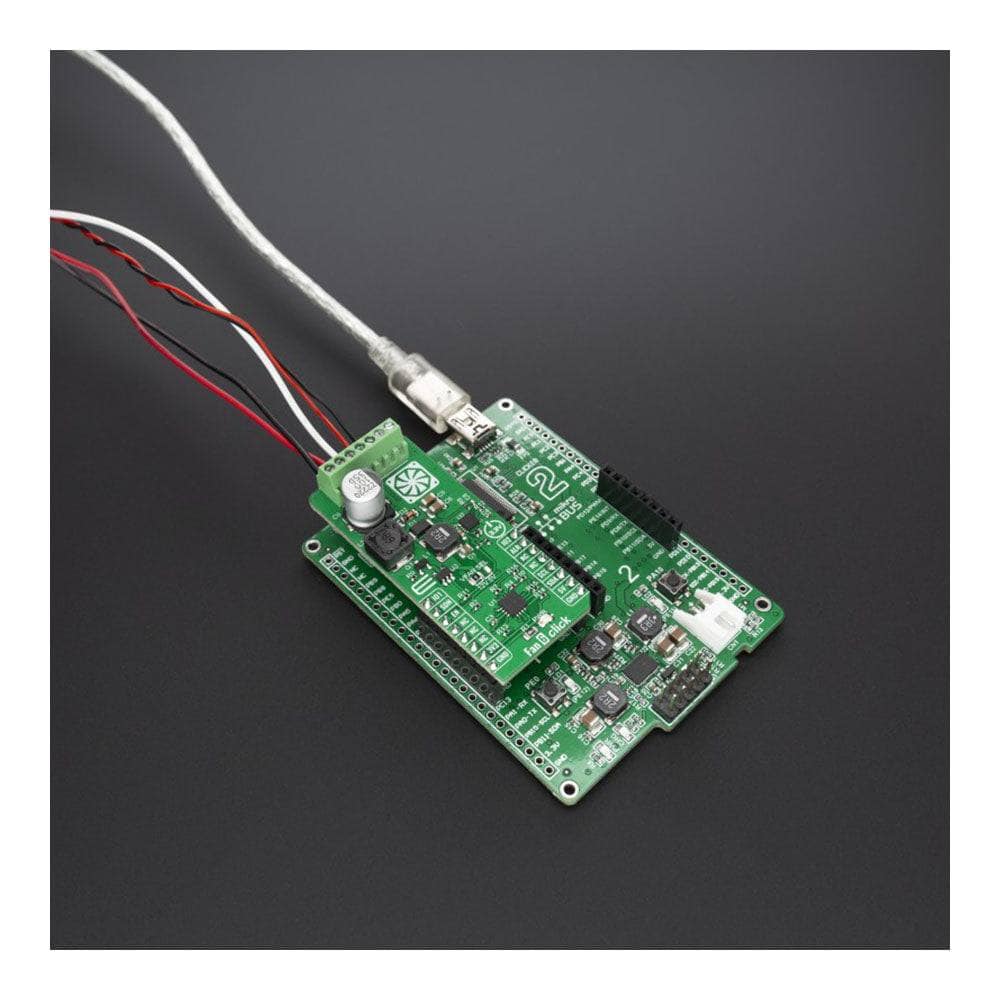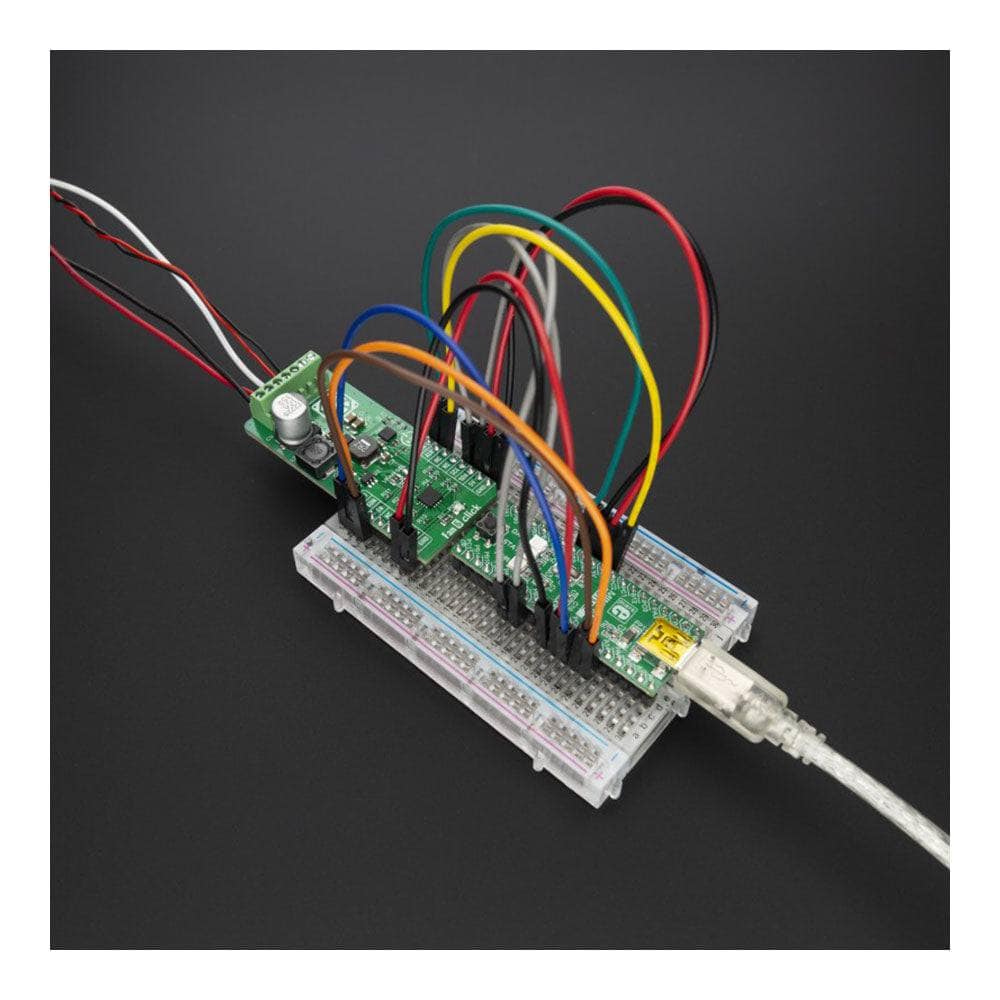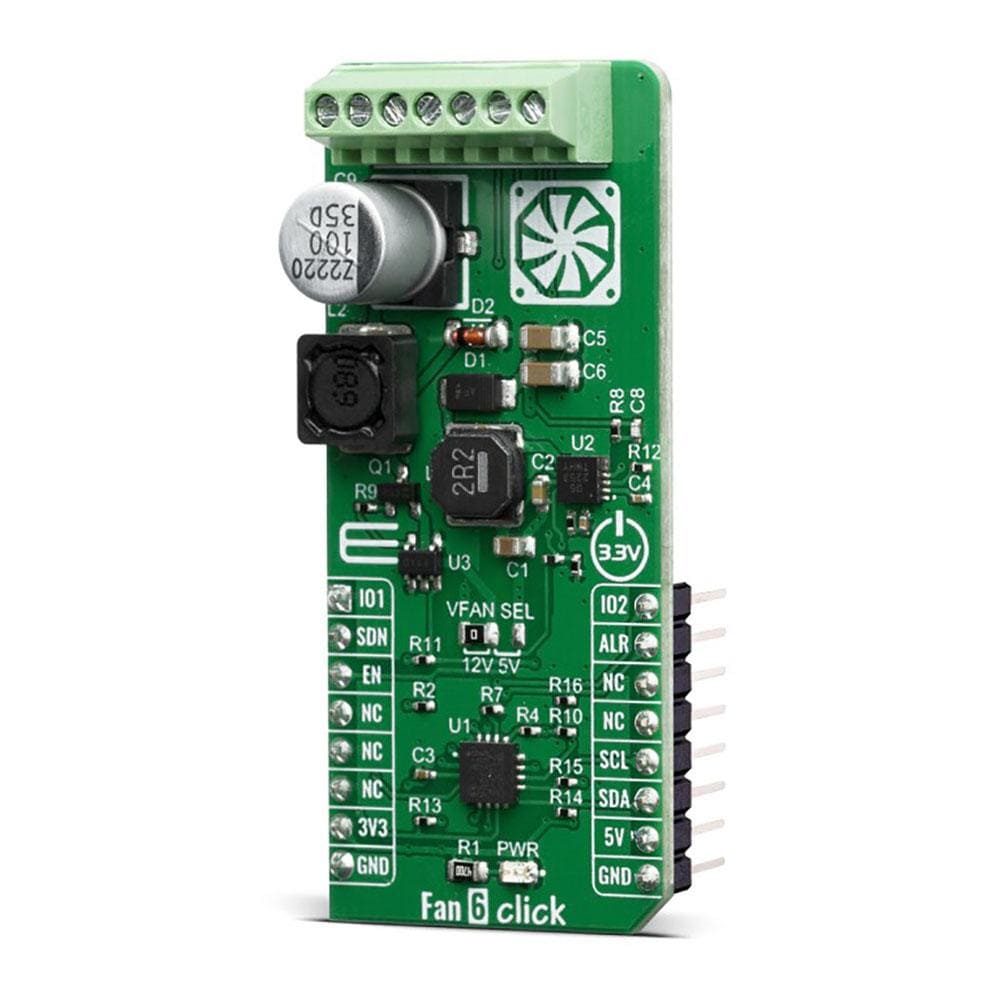
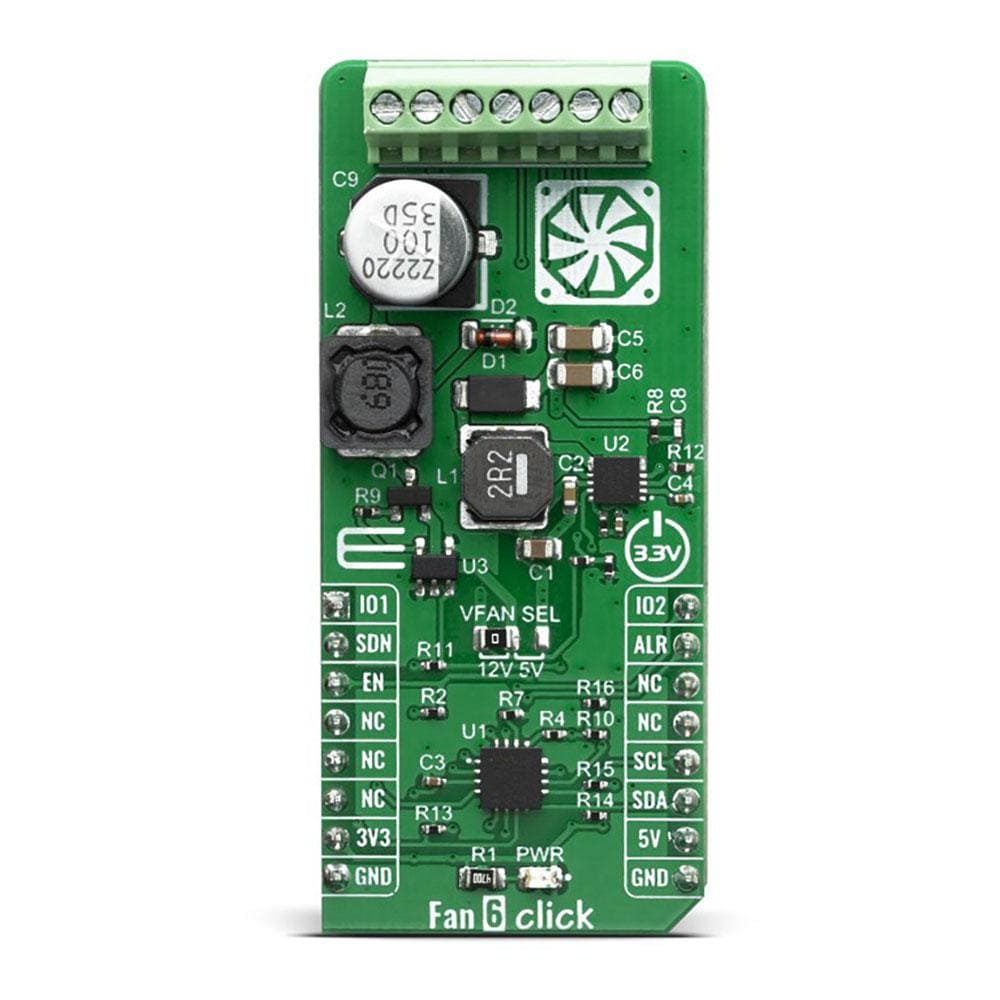
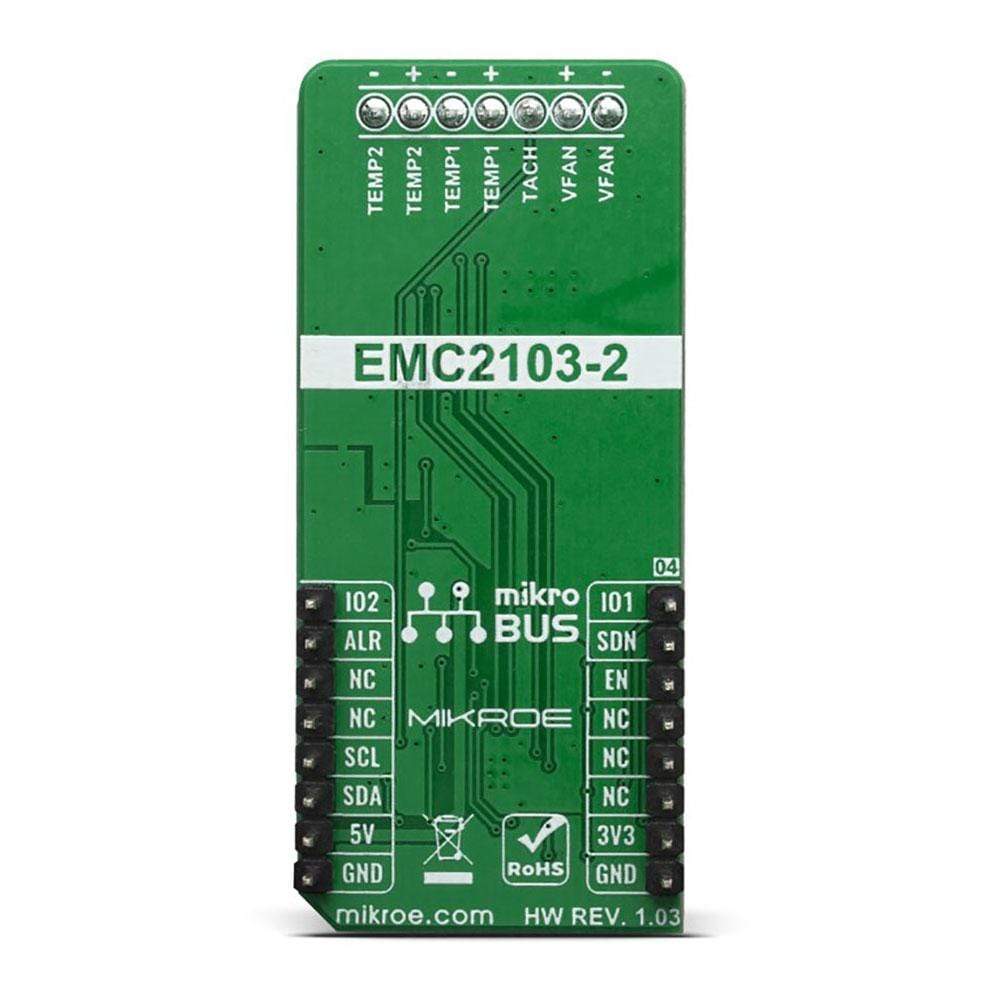

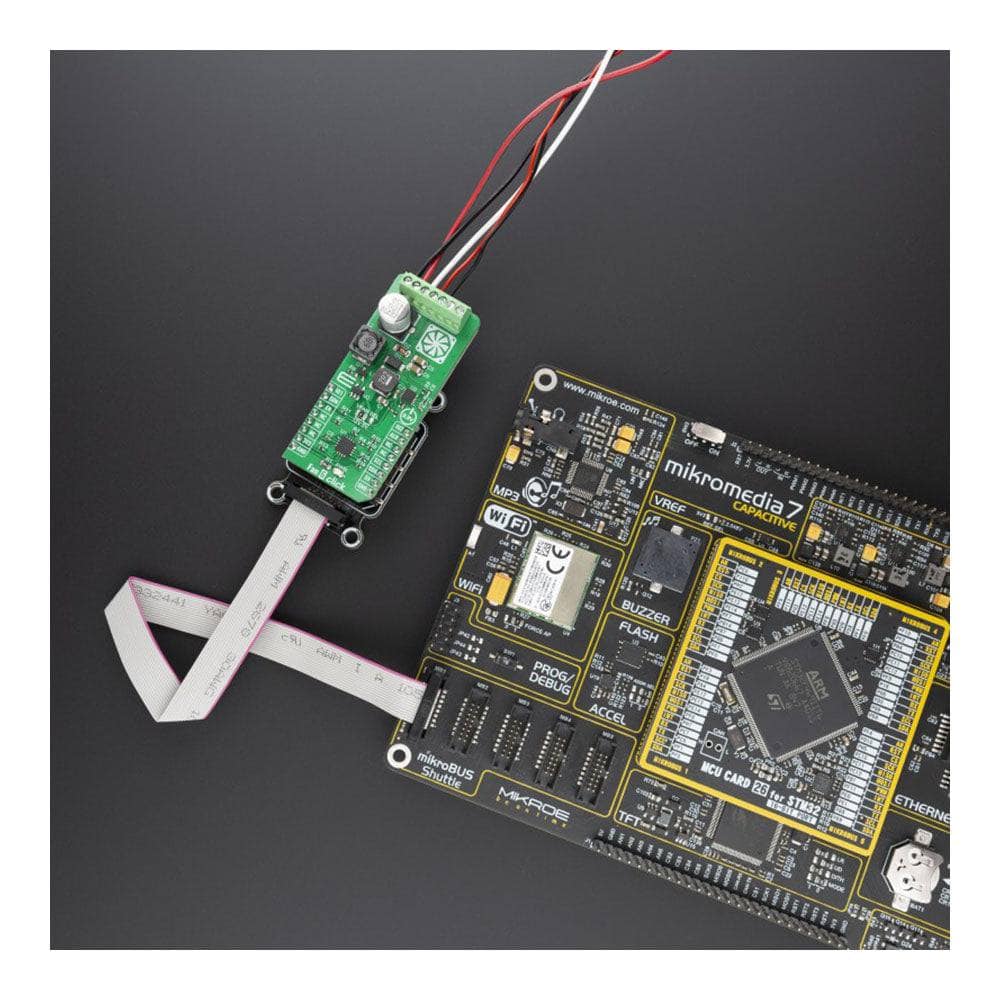
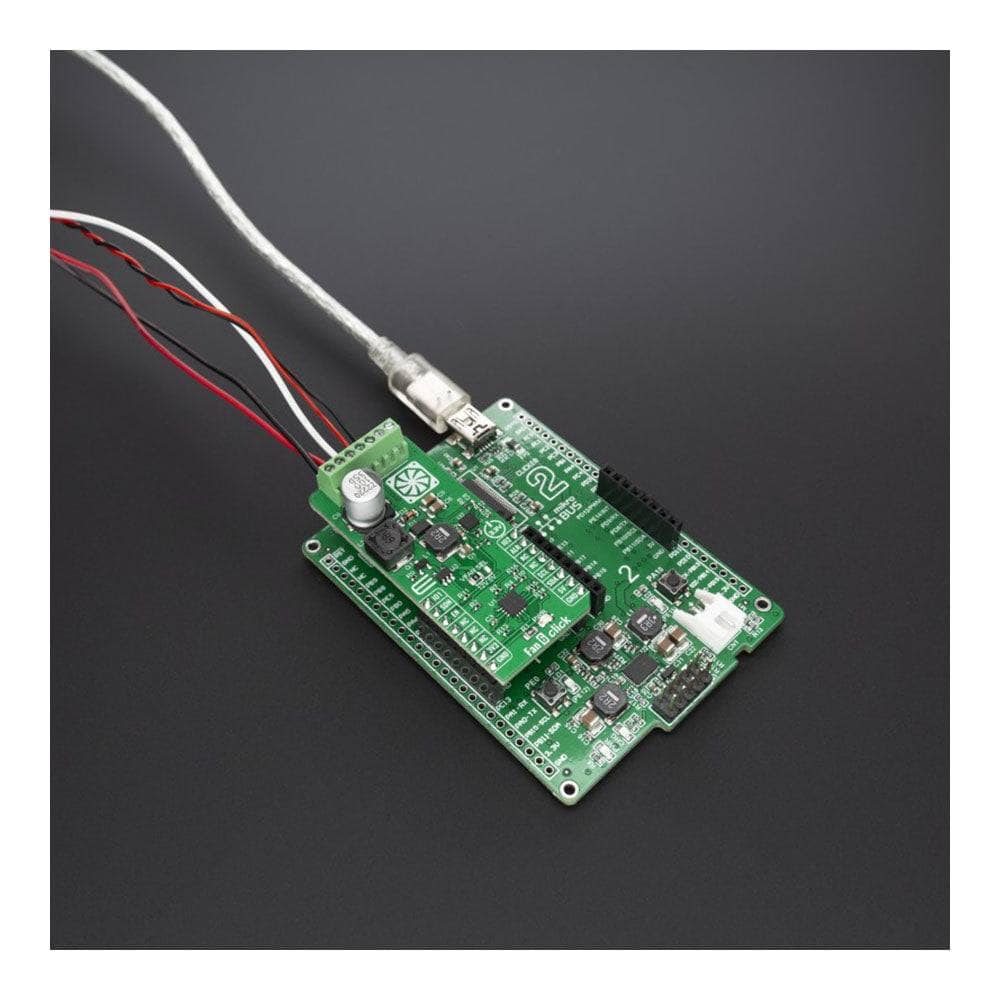
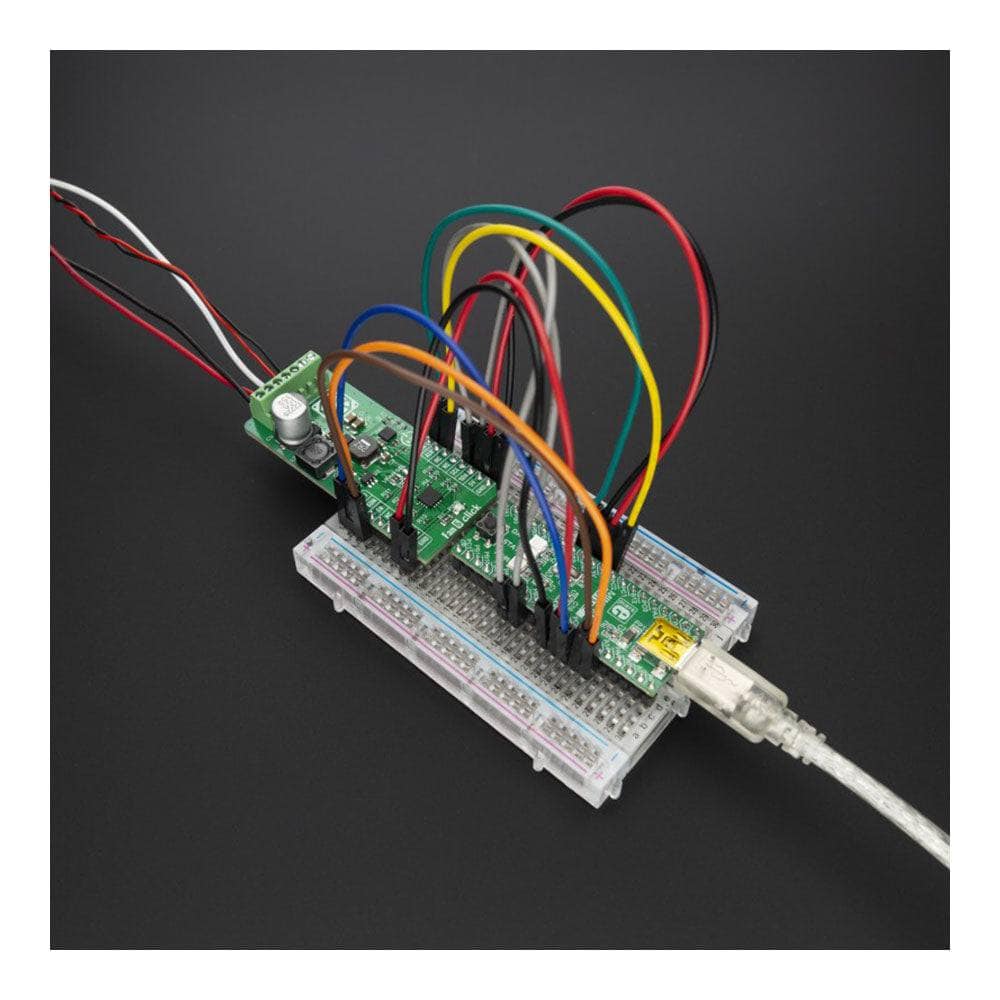
Overview
The Fan 6 Click Board™ features the EMC2103, an SMBus compliant fan controller with up to up to 3 external and 1 internal temperature channels. The fan driver can be operated using two methods each with two modes. The methods include an RPM-based Fan Speed Control Algorithm and a direct PWM drive setting. The modes include manually programming the desired settings or using the internal programmable temperature look-up table to select the desired setting based on measured temperature. And MIC2253 a high power-density, 1 MHz PWM DC/DC boost regulator which allows driving a 12V fan.
Downloads
Das Fan 6 Click Board™ verfügt über den EMC2103, einen SMBus-kompatiblen Lüftercontroller mit bis zu 3 externen und 1 internen Temperaturkanal. Der Lüftertreiber kann mit zwei Methoden mit jeweils zwei Modi betrieben werden. Die Methoden umfassen einen RPM-basierten Lüfterdrehzahl-Steuerungsalgorithmus und eine direkte PWM-Antriebseinstellung. Die Modi umfassen die manuelle Programmierung der gewünschten Einstellungen oder die Verwendung der internen programmierbaren Temperatur-Nachschlagetabelle, um die gewünschte Einstellung basierend auf der gemessenen Temperatur auszuwählen. Und MIC2253, ein 1-MHz-PWM-DC/DC-Boost-Regler mit hoher Leistungsdichte, der den Antrieb eines 12-V-Lüfters ermöglicht.
| General Information | |
|---|---|
Part Number (SKU) |
MIKROE-3867
|
Manufacturer |
|
| Physical and Mechanical | |
Weight |
0.023 kg
|
| Other | |
Country of Origin |
|
HS Code Customs Tariff code
|
|
EAN |
8606018719402
|
Warranty |
|
Frequently Asked Questions
Have a Question?
Be the first to ask a question about this.

